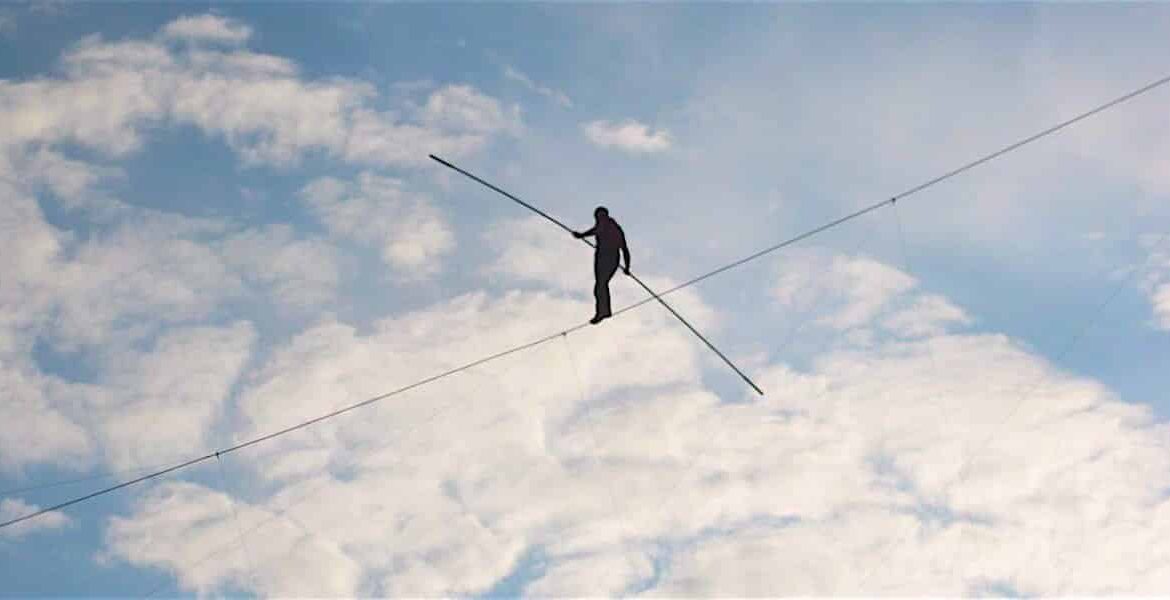 Eric Simpson is the Director of Learning and Leadership Services at the Texas Association of School Administrators, and he is heavily involved in the Texas Performance Assessment Consortium, commonly referred to as TPAC. The consortium is made up of 44 school districts, and the purpose of the group is to push for community-based accountability in schools, something Eric says that schools and administrators are very much lacking.
Eric Simpson is the Director of Learning and Leadership Services at the Texas Association of School Administrators, and he is heavily involved in the Texas Performance Assessment Consortium, commonly referred to as TPAC. The consortium is made up of 44 school districts, and the purpose of the group is to push for community-based accountability in schools, something Eric says that schools and administrators are very much lacking.
Eric feels a personal responsibility to influence schools, not just in his district but everywhere, as his kids are enrolled in a member district. His involvement in the TPAC group is part of this attempt to change the direction of education in Texas and as he says, “stop going down a path that creates shallower expectations and shallower learning experiences based off of a very limited way of assessing learning.”
This interview demonstrates Eric’s openness to having hard discussions about the shortcomings of our current education system. He offers a refreshing willingness to examine concrete ways that we, as a society, might attempt to turn things around for the better.
Interview Transcript
edCircuit Eric, it’s nice to spend some time with you. I will tell you that I’m pretty lucky in what I do because I get to talk with thought leaders in education that are tackling some very big challenging topics. I think what’s going on in Texas is noteworthy and we should all know what’s going on when it comes to the ways in which we’re evaluating assessments; and we’re talking about that as school leaders.
With that as the backdrop, tell me a little bit about TPAC. Spell that out for folks. Let us know its origins of that and how that got started so that we can see how it applies to us outside of Texas and what we can learn for districts that are currently not a part of it.
 Eric Simpson: It stands for the “Texas Performance Assessment Consortium.” We’re rooted in the relationship between assessment and accountability and making sure that that assessment is authentic; that it is informative to all stakeholders in the system; and, above all else, that it tells a complete story of what’s going on in a school district.
Eric Simpson: It stands for the “Texas Performance Assessment Consortium.” We’re rooted in the relationship between assessment and accountability and making sure that that assessment is authentic; that it is informative to all stakeholders in the system; and, above all else, that it tells a complete story of what’s going on in a school district.
The way that this was started, in 2006 through the Texas Association of School Administrations, we had convened about 35 different superintendents who were really looking at what it means to be future-ready and what it means to really be educating students for the 21st century.
In education, we talk about “21st-century learning and 21st-century preparedness.” We’re seventeen years in, right? The 21st Century is here.
If we’re looking at the impact of technology in education, the impact of technology on the culture and in career and in college, what exactly does that mean for traditional schools?
These 35 superintendents came together to really author a new vision for public education in Texas. They constructed these five articles that they felt leaders needed to really pay close attention to, to further the way that we’re serving the new generation of students.
Part of it is the way that we address the digital environment. With technology and with this new way of interacting with information, it’s very different from the traditional system when you and I were in high school, which was about finding the information that was out there and reporting it back.
The challenge was actually locating enough sources to be informed. So you’d go to the library; you’re trying to get six or twelve sources on your topic; you’re limited to what’s in front of you.
The new way of interacting with that is that they have the opposite problem now. Students have a glut of information and the trick is figuring out how to think critically and deal with that new information in a way that not only builds upon their knowledge but also useful in an authentic way for what they encounter in the workforce, in college, and everything else.
This new environment requires new learning standards. That’s really what that Article 2 is about. If Article 1 is digital learning, Article 2 is about those new learning standards that have to be in place to make sure that students are encountering skill building that really helps them succeed in the new world.
Articles 3 and 4 are about assessment and accountability. The funny thing is that whenever they are running the assessment and accountability in Texas, we were part of the force that started the ever-reliance on standardized tests-based accountability.
The very first standardized tests appeared in Texas around 1980. It becomes high stakes around 1984.
Whenever you look at the adaptability of the systems in public education, we continue to innovate; we continue to try to differentiate for students but so much of assessment is based on something that’s designed to resist differentiation. That’s what standardizations are there for, right?
DB: A lot of folks are talking nationally and looking at, as I’m sure you are in Texas, authentic assessment. Is that a point of discussion within TPAC when superintendents are talking about how we make something authentic yet reliable when we’re trying to understand how to allocate resources and better prepare teachers and support them? Where does the term “authentic” fit into this conversation?
 ES: I think you’re right on. We feel like students are not experiencing tests or assessments in general that are representative of the actual experience they’re having in schools and the actual knowledge and skills they’re obtaining. They’re not actually experiencing assessments that are meant to measure their amount of skill acquisition.
ES: I think you’re right on. We feel like students are not experiencing tests or assessments in general that are representative of the actual experience they’re having in schools and the actual knowledge and skills they’re obtaining. They’re not actually experiencing assessments that are meant to measure their amount of skill acquisition.
Their rank order tests are meant to compare them to other students within their age range. There’s a selection of content that is tested but it’s not tested for mastery. Those test items are meant to separate high, medium, and low-achieving students in that subject area.
The schools are not receiving ratings, they’re not receiving information based upon the actual work of students; it’s based on one-time, end-of-year test that’s supposed to represent how a student has developed.
What we’ve tried to do in TPAC is focus on what educators actually learn about their students from the school year.
Assessment happens year round. There’s assessment for the process. There’s assessment for the actual skills that are learned. There are so many different pieces to assessment that, frankly, become ignored whenever we put so much pressure on one single test.
The schools and the districts receive their rankings based off of, largely, this end-of-year test; and what results is an incomplete audit. You have one small part of what somebody does in school applied to the rest of the school system.
We’re going to be looking at a district as actually trying to do a performance-based assessment and have portfolios for students for each of their core classes.
There’s no way to really represent that in the accountability system at this time. It’s all based on that one moment of assessment.
The same can be said with the assessment of a district. No matter how much work they complete and offer professional learning experiences to teachers to better differentiate it for students and to increase content knowledge of their teachers and increase pedagogy, that’s just not apparent in the current system. They look very much the same as somebody else who performed similarly on the test.
You can possibly see certain gaps in student performance through those standardized tests, but what you can’t really see is any true causation for the problems.
edCircuit: Eric, let’s dive in, if we can, to TPAC. I think it’s really interesting. For those who don’t work in education, there’s a mystery about thought leadership in education and how we get to where we are now whether it’s policy or practice.
Speaking of auditing and sort of changing the narrative if we’re using assessment as sort of the backdrop, tell me about the conversations amongst the TPAC members as a method of sort of self-checking that even the way in which the conversations are going, the questions that are being asked that they are taking a new path or that they are challenging old narratives that we’re trying to break.
I think it’s human nature that we continue to repeat the wheel. And if we can do a really good job of having these open conversations about what we’re used to seeing and challenging each other and sharing each other’s stories, that’s when we can really find a new method of interaction.
 ES: I think a lot of the challenge and thinking about the accountability system is making sure that it’s meaningful to both the public and educators. The educators need an accountability system that can inform their practice and allows them to have some agency in what they’re accountable for.
ES: I think a lot of the challenge and thinking about the accountability system is making sure that it’s meaningful to both the public and educators. The educators need an accountability system that can inform their practice and allows them to have some agency in what they’re accountable for.
The public school is the bedrock of the community and so much of what we’ve done in accountability has been to take that agency away from local school boards and give it to a state agency. The state agency has to take this incredibly complex system and distill it into something that’s easy enough for the general public to understand and can be understandable and useful for districts.
They end up failing on both sides because I think there’s an inherent underestimation of the public when it comes to accountability reports. They say, “Well, it’s got to be simple. Everybody understands A through F. We all went to school. We all have an A in something. We probably all had an F in something at some point.”
We get that scale. We’re informed if we see that there are schools of B or a C. We know what that means.
But in actuality, we don’t know what that means. It’s an oversimplification in such a way that you feel informed but you’re less informed than when you began.
edCircuit: And I think that’s a key point. Even the acknowledgment from thought leaders like you to say, “Look, we can all come to an agreement that it doesn’t give us the complete picture.”
It really does speak not only to the transparency of education for the teacher and the student but the ways in which we can incorporate the community and parents.
Do you agree?
ES: I do. If the reports we give the community can really engage the values they accept for their school system and it’s able to give some tangible representations of things that need to be worked on and the struggles in the system as well as the successes – then, you’re really well-informed about your child’s education.
If you’re looking at standardized test scores and overall printouts, you’re learning more about non-schooling factors than schooling factors. A lot of those are just not a surprise.
People know what they look like. People know the makeup of their schools. What they really need to understand is what educators are doing to address all the needs of a diverse community.
If you’re in a compliant system, there’s no way to really overachieve. You can’t be more compliant. It’s either you’re compliant or you’re not.
I think that’s where people try to make these assessments do things that they’re just not designed to do. You can’t determine college-readiness with a compliance-based high school test. You may want to do that and you might say, “Boy, we think if they scored this high on it, they’re likely to do well in college.”
But, again, there’s no causation. It’s the illusion of being informed.
I think we all know the only way to be informed about our students’ education is to be involved in our students’ education. You have to ask some really difficult questions and you have to really engage with your school to understand what’s exactly going on.
I feel like the state system, sometimes, unintentionally, discourages parental involvement in those questions. They say, “Here, we’ve given you the information. We’ve told you what that information means and there’s really nothing else for you to do besides either want it to be better or be happy that it’s not worse.”
Whereas if we’re really involving our constituents in setting educational goals for the system and holding the leaders accountable for those decisions, community-based accountability would be a greater accountability than we’ve ever faced.
School leaders were not being held accountable for what we’re actually doing in our districts. It’s the illusion of accountability.
“If your kids don’t improve in reading, we’re going to give you an unpleasant consequence.”
Everything is about avoiding that unpleasant consequence rather than doing what almost every industry does which is setting expectations for professionals with those professionals being involved in carrying those expectations out and reporting out a preponderance of evidence that they have exceeded the expectations.
 edCircuit: I agree with you there. There are a lot of kids who wish that their parents had that discipline at home.
edCircuit: I agree with you there. There are a lot of kids who wish that their parents had that discipline at home.
Let’s close with this, Eric. What is your personal hope with TPAC when you look back at it retrospectively? What’s the goal that you personally have for the conversation, the community that has been generated around the consortium and looking at performance assessment/accountability and how that interfaces with the community?
ES: I’m lucky enough to have my children, personally, go to a district that has decided to join TPAC. I feel I have a personal responsibility for making sure that my kids have a wonderful education and that they have a rich chance at deep, profound learning.
My personal hope is that we stop going down a path ─ as a profession and as a society ─ that influences that profession greatly and stop going down a path that creates shallower expectations and shallower learning experiences based off of a very limited way of assessing learning.
The fact that the accountability system doesn’t actually hold us accountable, it doesn’t actually give us a true accounting of the work that school districts do. It’s unfortunate and it can be better.
The thing that’s actually damaging is the assessment and accountability system itself in how it incentivizes is very, very narrow experiences for students.
The example I’d give is you would never ever spend a week giving a test prep packet unless you had a test to prepare for at the state level. There’s no way that ─ as a practitioner ─ you would rely upon very limited worksheet-based, multiple choice-based ─
edCircuit: You’d lose your students.
ES: You would ─ absolutely! The only way that activity is meaningful is if you have a test to prepare for and you tell your students, “Well, we have to prepare to this test so we’ve got to do this thing here and ─”
The tail wagging the dog, the small one-time assessment ends up influencing your entire year.
I think the argument that people bring forward on standardized testing is “Well, it’s only once a year.”
But it adds up. Yes, it’s once a year for every subject that your state decides to test. But if it’s high stakes, the teachers feel like you have to prepare them for that and the learning suddenly becomes secondary.
If we, as a system, make reading goals and say, “Okay, our big goal is that we are going to have everybody reading on grade level by the time they hit tenth grade,” that’s a different goal than “We’re going to try to make sure that everybody passes an on-level standardize test on reading” because what that turns into people trying to get students who read below grade level to pass an on-grade level test. And it sets us up for failure.
Instead, it should be about the outcomes we’re most concerned with, and that’s the actual students’ skill development and getting them ready for post-secondary success.
Often, these tests serve a proxy for that and we begin to prepare for this proxy rather than actually prioritizing the skill acquisition itself. It’s not because the leaders don’t get it or because the teachers value the tests more. It’s that the state values the tests more. All of the decisions at the state level hinge upon that compliance piece.
It becomes a very real threat to schools that struggle the most of receiving less support or receiving fewer funds. And it drags us all down.
 DB: It requires a breath of fresh air, an openness and a willingness to have a conversation about accountability and how we reevaluate what is authentic and not authentic. And that’s when it’s going to get fun to check-in with you periodically to see how TASA and TPAC are working in tandem to expand the conversation.
DB: It requires a breath of fresh air, an openness and a willingness to have a conversation about accountability and how we reevaluate what is authentic and not authentic. And that’s when it’s going to get fun to check-in with you periodically to see how TASA and TPAC are working in tandem to expand the conversation.
I know that it is right there within your home state of Texas. But I think there’s a lot that we can learn not only outside of Texas but globally because the global classroom is real and it’s thankfully spreading to administrations and leadership development and changing the path of education.
Continued success, Eric, and thank you again.
ES: Thank you very much.
About Eric Simpson:
 Eric Simpson is the Director of Learning and Leadership Services at the Texas Association of School Administrators. Prior to his role at TASA, Eric served as a secondary literacy and language arts administrator for Lewisville Independent School District, a large suburban district north of Dallas. He also served as the English language arts content lead for the TASA on iTunes U project.
Eric Simpson is the Director of Learning and Leadership Services at the Texas Association of School Administrators. Prior to his role at TASA, Eric served as a secondary literacy and language arts administrator for Lewisville Independent School District, a large suburban district north of Dallas. He also served as the English language arts content lead for the TASA on iTunes U project.
Simpson taught English at the high school and college level for nine years before moving into curriculum and professional development. Eric has presented at conferences for the National Council for Teachers of English and SXSWedu. In 2015, he was recognized as an Apple Distinguished Educator and received the North Star of Texas Writing Project’s Leslie Patterson Leadership Award for his contribution to literacy and writing instructional leadership.
- The CT Mirror – Feds give nod to CT’s plan for education accountability
- My Plainview – Most area schools meet accountability standards
- Corpus Christi Caller Times – Corpus Christi, Texas fare well in TEA accountability
